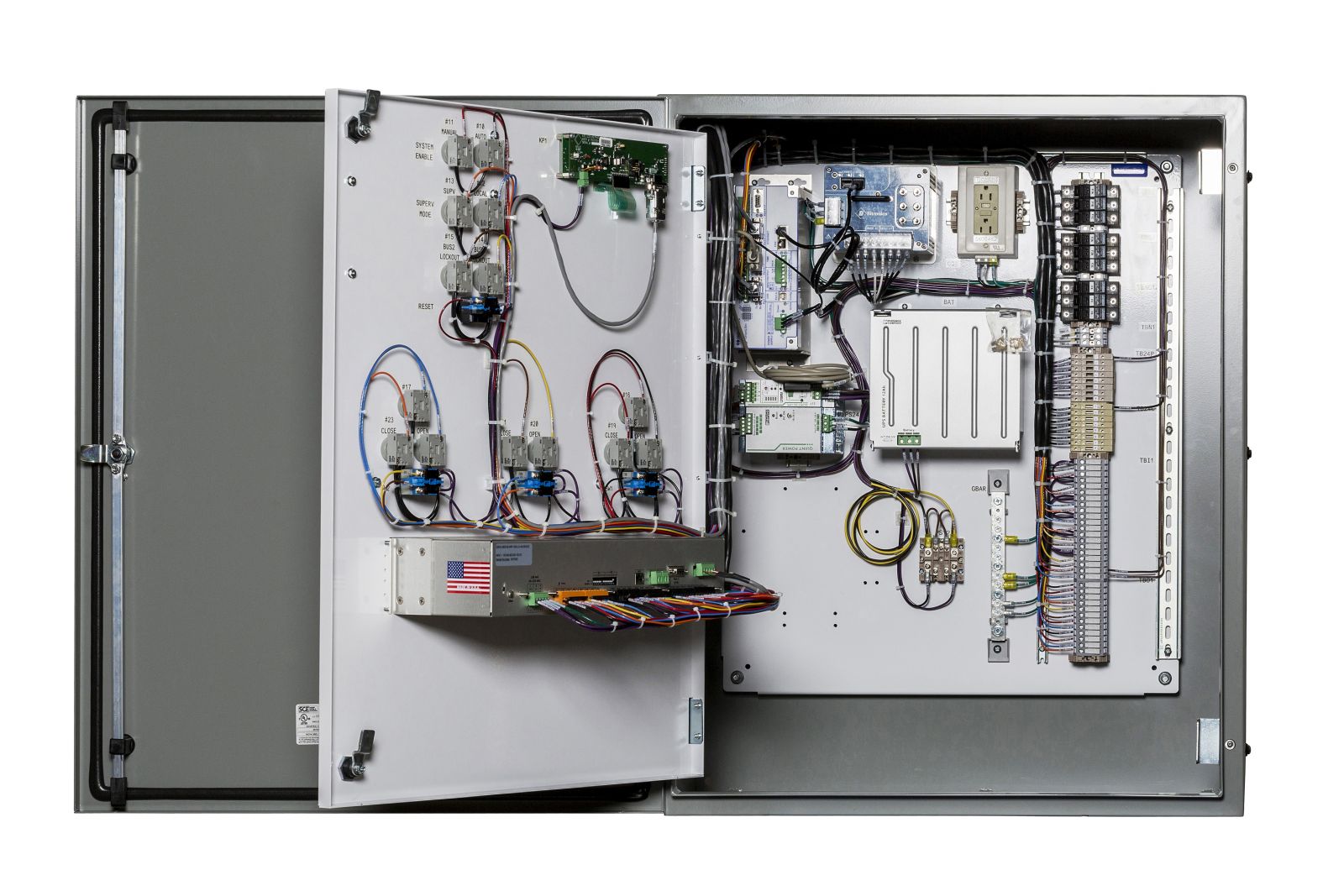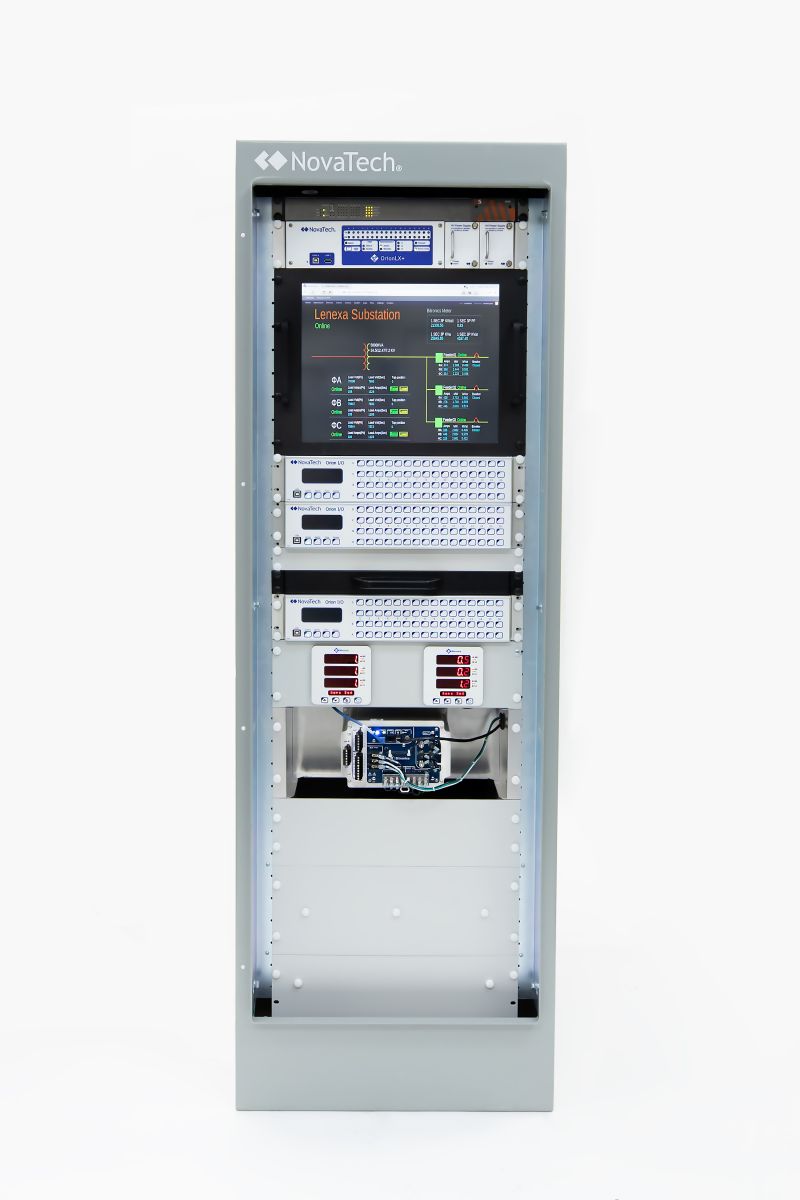Simplifying Distribution Automation in Substations and Pole-Tops
 Technological advances in "all-in-one" communication and automation processors allow distribution of information in many protocols, while performing sophisticated logic functions and alarm annunciation.
Technological advances in "all-in-one" communication and automation processors allow distribution of information in many protocols, while performing sophisticated logic functions and alarm annunciation.
Utility substation automation schemes are typically complex, involving a variety of intelligent electronic devices (IEDs), microprocessor-based relays, meters, and monitoring devices. The information collected is then sent to communication processors or RTUs, before being passed on to proprietary HMI interfaces, SCADA Master Stations, Energy Management Systems (EMS), and/or enterprise networks.
Within this scheme, the component parts are often cobbled together by utility automation groups from a multitude of competitor options, with varying protocols (some proprietary), configuration options, wireless transmission bands, and interconnections.
Given that utilities may have hundreds of substations, and even more pole-tops, to monitor and control remotely, the complexity of distribution automation has traditionally been staggering. Fortunately, over the past two decades, substation automation has evolved.
"In the past, the design of the substation was a patchwork of many different devices," says Russ Fanning, a P.E. with over a decade experience in the automation group of a large utility. "Once you finally got the patchwork figured out, you could replicate that pattern, but when you went to the next substation and you wanted to bring in something new, you were starting from scratch again and trying to patch that new piece in."
Today, Fanning says the focus is on stripping out as much of the complexity associated with substation automation as possible.

Recent technological advances have reduced the need for all that hardware. Instead, "all-in-one" communication and automation processor units interpret and distribute information in many protocols - while performing sophisticated logic functions and alarm annunciation - without the need for PLCs and racks of RTUs. These all-in-one devices even eliminate the need for security-risk PCs and proprietary HMI interfaces.
The communication and automation processor can connect to nearly any substation device in its native protocol, perform advanced math and logic, and securely present the source or calculated data to any number of clients in their preferred protocol.
For utilities concerned about support, looking to install equipment in new greenfield substations, or upgrading aging legacy technology, this is a welcome development.
Interpreting Communications and Protocols
Fanning started his career as protection technician. After getting his engineering degree, he worked in substation engineering as a protection engineer, then R&D engineer, then became a principal engineer in the substation automation group.
"In my last 5-6 years at the utility, I was responsible for distribution automation and substation integration, utilizing a system that interfaced with all the IEDs that were inside the substation and at the pole-tops. I integrated pole-top device IEDs into the distribution automation systems when they were enabled with communication capabilities," says Fanning.
Over the years, the utility has installed more than 500 distribution automation systems to improve the operations of both old and new substations. An algorithm designed to automate the switching of substation breakers and pole-top devices works to restore power and/or avoid power outages and equipment damage.
 The challenge was having to work around ways to retrieve the data from the IEDs and other devices. Multiple protocols are often used for distribution automation, including proprietary protocols with custom communication links. "In a typical substation set-up at the time, there was often different software in each device, and I would have to manipulate the data just to be able to share it," says Fanning. "One system needed a proprietary protocol and software just to communicate to the device."
The challenge was having to work around ways to retrieve the data from the IEDs and other devices. Multiple protocols are often used for distribution automation, including proprietary protocols with custom communication links. "In a typical substation set-up at the time, there was often different software in each device, and I would have to manipulate the data just to be able to share it," says Fanning. "One system needed a proprietary protocol and software just to communicate to the device."
In most modern substations, microprocessor-based relays involve a proprietary protocol, so the communications processors must be able to retrieve real-time fault event data and records by speaking to the relays in their native protocol.
Another standard protocol used by SCADA Master Stations, RTUs, IEDs, and also for relays, is DNP (Distributed Network Protocol). The IEC 61850, an international standard defining communication protocols for IEDs, aims to promote interoperation of IEDs from different vendors. Older IEDs may still use Modbus or other legacy protocols.
According to Fanning, using a hub for all the data collection, both in collecting and interpreting, or taking action, allows the system to send that off to the control center to change setting, trip a breaker, or switch a feeder.
"There is a wealth of information that is being created inside newer IEDs, microprocessor-based relays, and meters that, until recently, has been left behind because it was too challenging to collect and distribute it," adds Fanning. "Today, you can drill down into those IEDs from a remote location using a secure connection."
One of the biggest incentives in automating the substations was reducing the driving time to remote sites - traveling between utility headquarters, home, and substations often meant a 2 to 3-hour drive.
The automated system gave Fanning access to the IEDs in a substation so he could get a clear picture of what was happening. This improved overall efficiency because he knew what had to be done before making the trip and, in some cases, could delegate the work to someone in the area.
Today's open-source web-based SCADA and HMI solutions eliminate the need for a substation PC and its inherent software and cybersecurity concerns, at a fraction of the cost.
In this approach, engineers can build interactive screens accessible from standard web browsers. For example, a browser can be used to view data from connected IEDs and RTUs. The software comes with pre-configured pages for data archiving, sequence of events recording, alarm annunciation, alarms, trending and communications diagnostics. Customized screens could easily be built for one-line diagrams, IED faceplates, and control screens.
As for HMIs, web-based systems provide a direct-to-touchscreen connection out of the box without a PC as an intermediary. Information can also be accessed by smartphone, which will bring up a substation and graphically show the faceplate of each device, complete with push buttons as if the technicians was physically there.
"The HMI is served up through webpages that are easily constructed with graphic software. It's all integrated in one package, so building an HMI is so much simpler than it used to be," says Fanning.
If there is a physical manifestation of the reduction in complexity, Fanning points to the substation. He worked in many substations that had racks or cabinets of devices with hundreds of wires and blinking lights.
"Today, substation layout is much cleaner. You can probably eliminate entire writing racks and cabinets - or at least make it much smaller - depending on how you are handling your I/Os to the IEDs," says Fanning.
Caroline Fricks Wood is the Director, Corporate Communications for NovaTech, a supplier of automation and engineering solutions for electric utilities and process manufacturing industries for over 30 years.
NovaTech | www.novatechweb.com
Author: Caroline Fricks Wood
Volume: 2019 November/December








